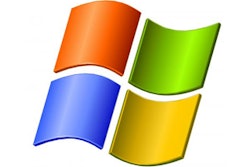ERP software selection can be a consuming venture for a manufacturer. The right selection can take a company to new heights, while the wrong fit can hold a company back. What follows is a matrix of available ERP software solutions to help you begin your journey of finding the right fit.
Working with our partners at Eval-Source, Manufacturing Business Technology reached out to ERP software companies and asked them to provide information on their software offerings. The table below is intended to give you a brief overview of what is available. If you find something that sparks your interest, you can reach out to those companies for more information or contact companies like Eval-Source that dig deep into these offerings and give you a more robust look into what the software can do for a company — hopefully making the process of ERP software selection easier and less of a headache.
Below the matrix, you can also read an article by our partners at Eval-Source. This article talks about the current trends that affect software selection like two-tiered systems, hybrid systems, unifying disparate systems, cloud mashups and business agility. A combination of these trends and the matrix gives manufacturers a great starting point in the search for the best solution that will meet their needs.
The ERP Software Solutions Matrix
ERP Trends That Affect Software Selection by Eval-Source
In order for organizations to capitalize on cloud computing and its benefits, there are new and emerging trends within the ERP cloud market that organizations should be cognizant of. These trends can affect not only IT strategy, architecture, and may even determine the specific software an organization selects.
Companies are becoming creative in the way they utilize SaaS and cloud computing technology. Because of the flexible delivery model, agility, and scalability of SaaS and cloud ERP solutions, companies can enhance functionality to existing systems, complement on-premise solutions, and unify siloed systems. Eval-Source has identified four emerging trends for ERP cloud computing and SaaS technology. The four trends discussed in this article are two-tiered systems, hybrid systems, unification of disparate systems and business agility. These four trends will affect your software evaluation, especially if the implications of each trend are not applied to the software selection process.
Two-tiered Systems
This new trend applies mostly to larger multi-national firms. In this scenario, the corporate entity (where the head office is located) has already invested significantly into its main ERP system, namely SAP or Oracle. Satellite offices around the globe (for the multi-national) often require unique functionality for localization and market variances. Due to geographic limitations, IT staff training, employee training, security issues to access the new system and procedures require additional change management. The satellite office often has its own procedures and systems to which they are already accustomed. The larger system may cause difficulty in operations and not provide the local variances or capabilities required such as tax localization or regulatory compliance etc. The satellite offices opt to adopt and implement smaller versions of cloud ERP solutions that are often different from the main ERP solution used at the head office. This scenario is especially true for manufacturing companies, where individual plants implement another ERP system entirely.
The satellite plants operate as individual entities year round, utilizing their own system until the year-end accounting cycle expires. The financials are then aggregated from the child systems and imported to the parent system. All entities are treated as divisions and cumulatively all financials are combined into the parent system, where the tier-one software has been implemented. Recently this trend is proving popular for organizations that have been acquired or have recently merged with other companies and many systems are already in place. The two-tiered strategy is a quick way for organizations to consolidate their operations without major impact to local operations. Organizations benefit from adopting this strategy because they need to neither change numerous operational methods nor require employees to be trained on the new system, tasks that could affect employee morale and company throughput, influencing bottom line results.
Hybrid Systems
The use of hybrid systems as a legitimate way to increase infrastructure, bolster functionality, and speed implementation times is starting to gain traction with organizations. This emerging trend refers to supplementing an existing (usually on-premise) software and technology with a cloud computing solution, creating a hybrid system.
Many companies have made the investment in on-premise software and are reluctant to replace existing systems, but when investigating methods to supplement their existing systems, they tend to select SaaS and cloud computing software. Because SaaS and cloud computing is very flexible in terms of delivery, they can be integrated in many ways to existing on-premise systems. Cloud computing can offer new infrastructure, platform, applications, products, and services and any combinations thereof.
The hybrid system approach is a lower-risk method for companies to get comfortable and experiment with SaaS and cloud computing technology without starting from scratch. The consequences of adding a cloud system to the existing system may not affect current operations, as familiar software is left untouched and already in place.
An example to illustrate this type of adoption would be a company that currently has a legacy or homegrown customer relationship management (CRM) system containing data that has accumulated over many years, causing the company to be reluctant to replace the entire system. Issues such as data migration, integration, professional services, and new functionality may prove problematic for the application. A SaaS or cloud computing application that has financial and distribution capabilities can be added to enhance functionality for the existing system.
Unifying Disparate Systems
The use of cloud computing has become a cost-efficient way to leverage and bolster existing infrastructure while extending functionality of existing systems. Using a cloud or SaaS model to unite all the data over the organization’s many systems is now an option. Aggregating data from all these systems is cumbersome, and that is considering that all structured and unstructured data has to be stored, backed up efficiently, tagged, and retrieved properly—a problem that has become more prevalent as organizations increase the number of systems they use. Content management systems (CMS) have a hard time aggregating unstructured data as well as aggregating data from many sources. Meta-tagging is required for all company wide data and may cause record duplication when recreated within the CMS.
Cloud Mashups
Another trend we are seeing is companies using the cloud to monitor all systems and creating a technology mashup that unites the data from all their systems. Cloud mashups are proving effective in monitoring and tracking updates, and companies have found them easy to build and administrate. Components of corporate data such as internal collaboration, external company monitoring, social feeds, email, and other unstructured data can be unified into one application. This option can be deployed using the web – from within the organization. This option enables the organization to adhere to any corporate security policies and provides the security by having the application exist behind the company firewall. In addition, this model may be deployed on either a public or a private cloud. Organizations are using the cloud and building their requirements as a mashup, using their own technology and security requirements.
Business Agility
The fast pace of today’s business environment requires organizations to be agile and flexible in both their business operations and in corresponding IT systems to support changes. Our research with end-users indicates that although features and functions are important aspects of a software evaluation, the importance of business agility is emerging as the next major factor in software buying decisions.
When an organization makes changes to its business by adding additional products or services or by provisioning its offerings through different methods, it is important their systems are capable of supporting their new business strategy. Organizations are investigating business agility as a key software selection criterion.
An organization’s ability to quickly adapt its systems to supporting a change in operations or business model requires business agility. Whether it was new configurations, redefinition of workflows, additions to database requirements and a host of other system tweaks, or custom programming, previously, the vendor had to be engaged to make these changes. The new landscape vendors have created through their technology and inherent software infrastructure allows organizations the ability to provide their own changes without much vendor interaction. This enables organizations to save money, control their own system changes, manage change management components more effectively, and allows quick systems changes should the business require them.
A key strategy for success is to define the organizational IT, service levels, infrastructure, platform, and application strategies and to identify which areas the cloud may applied to for reducing costs, maximizing efficiencies, enabling integration between disparate systems, and/or adding supplementary functionality to existing systems.
By not applying these trends to your software selection project can negatively impact your software evaluation evaluation. These new trends and the changing landscape has become more complicated than ever before. The use of impartial third party selection specialists with a proven system can simplify the evaluation process.
About Eval-Source
Eval‐Source is a consulting firm that provides all enterprise software selection and strategic technology consulting services for organizations to achieve success in their IT initiatives. Our consulting practices encompass cloud and on-premise software evaluation services, ERP, Supply Chain, and technology strategy consulting. Our Tru‐Eval selection system allows organizations to avoid IT failure, receive greater ROI and provide accurate decision support for enterprise software. Eval‐Source is an industry leader in the analysis of software technology and our thought leadership has placed us in the elite of consulting/analyst firms. What sets us apart is our unbiased best in class consulting services that provide our clients with value, direction and success in selection, planning and optimization of their technology systems. Eval‐Source provides the professional services that put your needs first and allows you to achieve success in your IT initiatives. We are the source for “getting it right” in IT procurement.






















